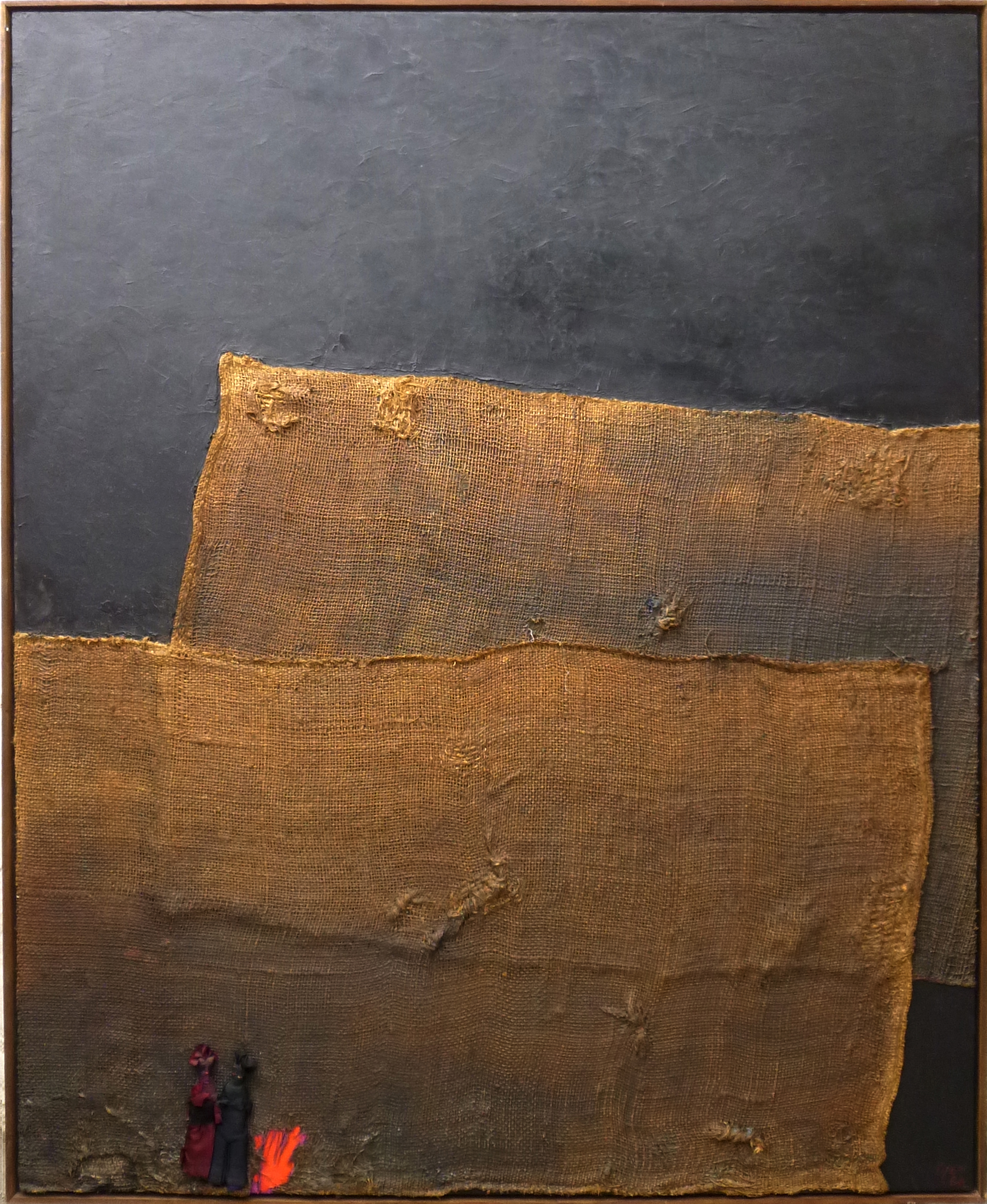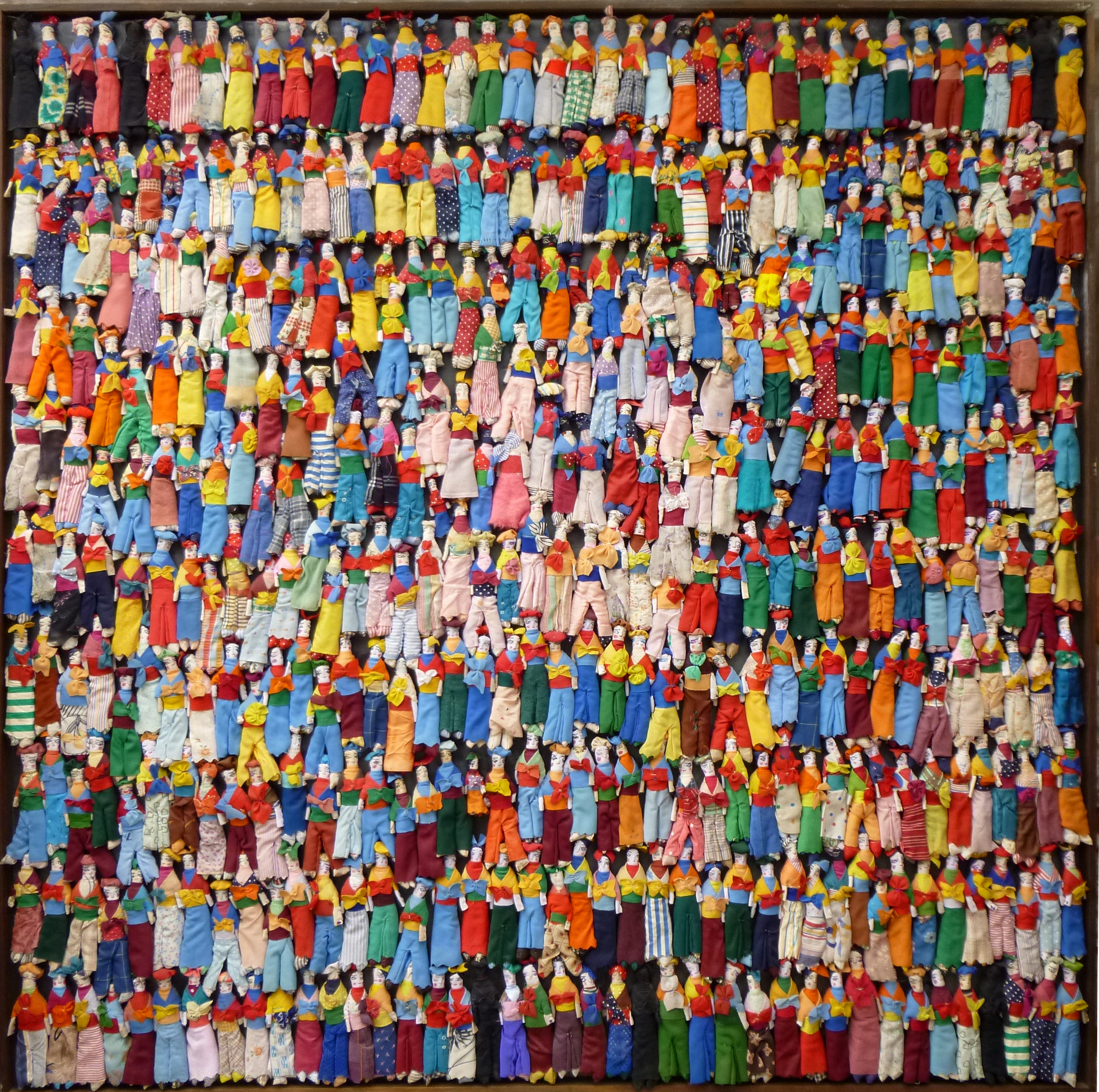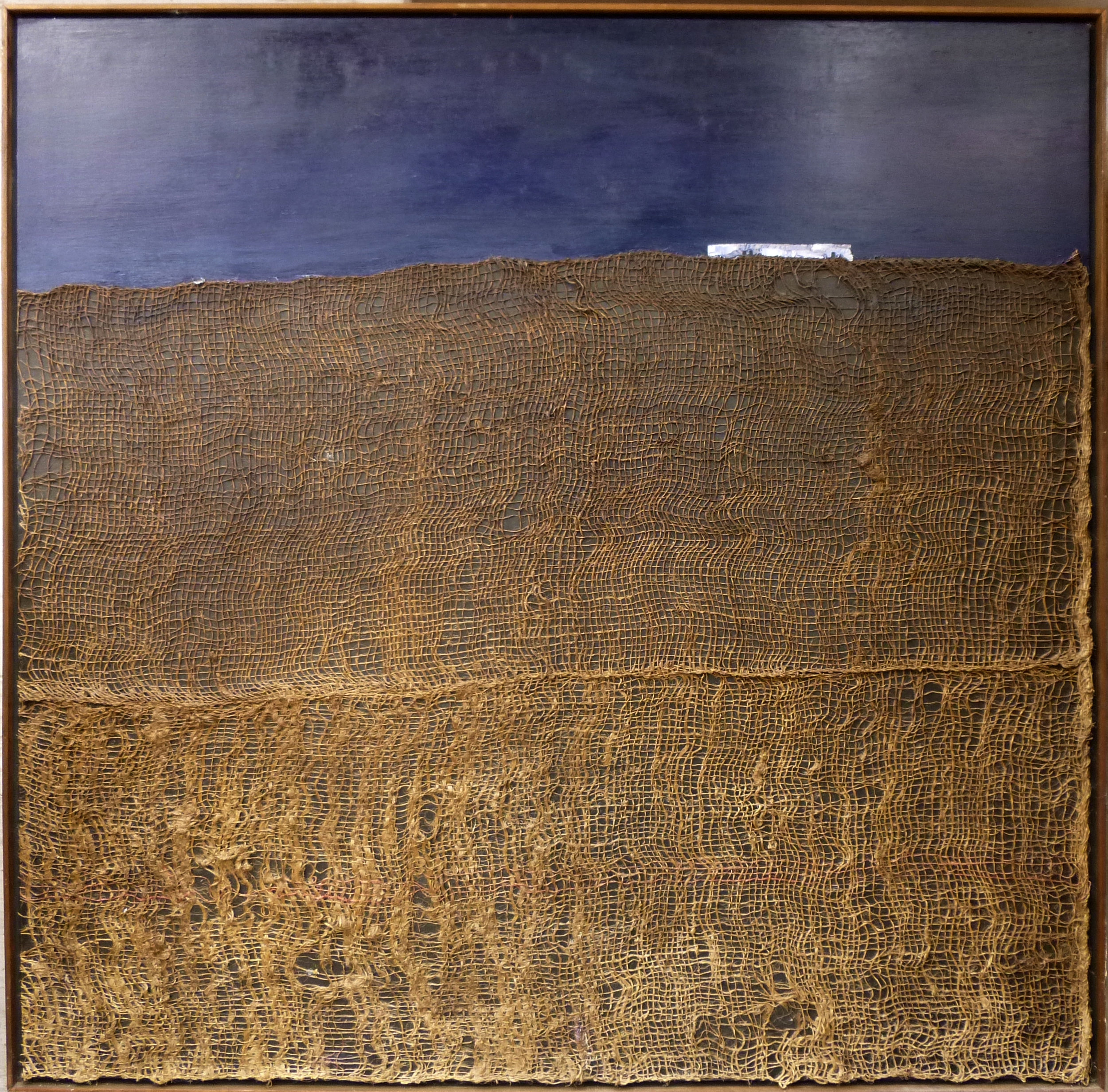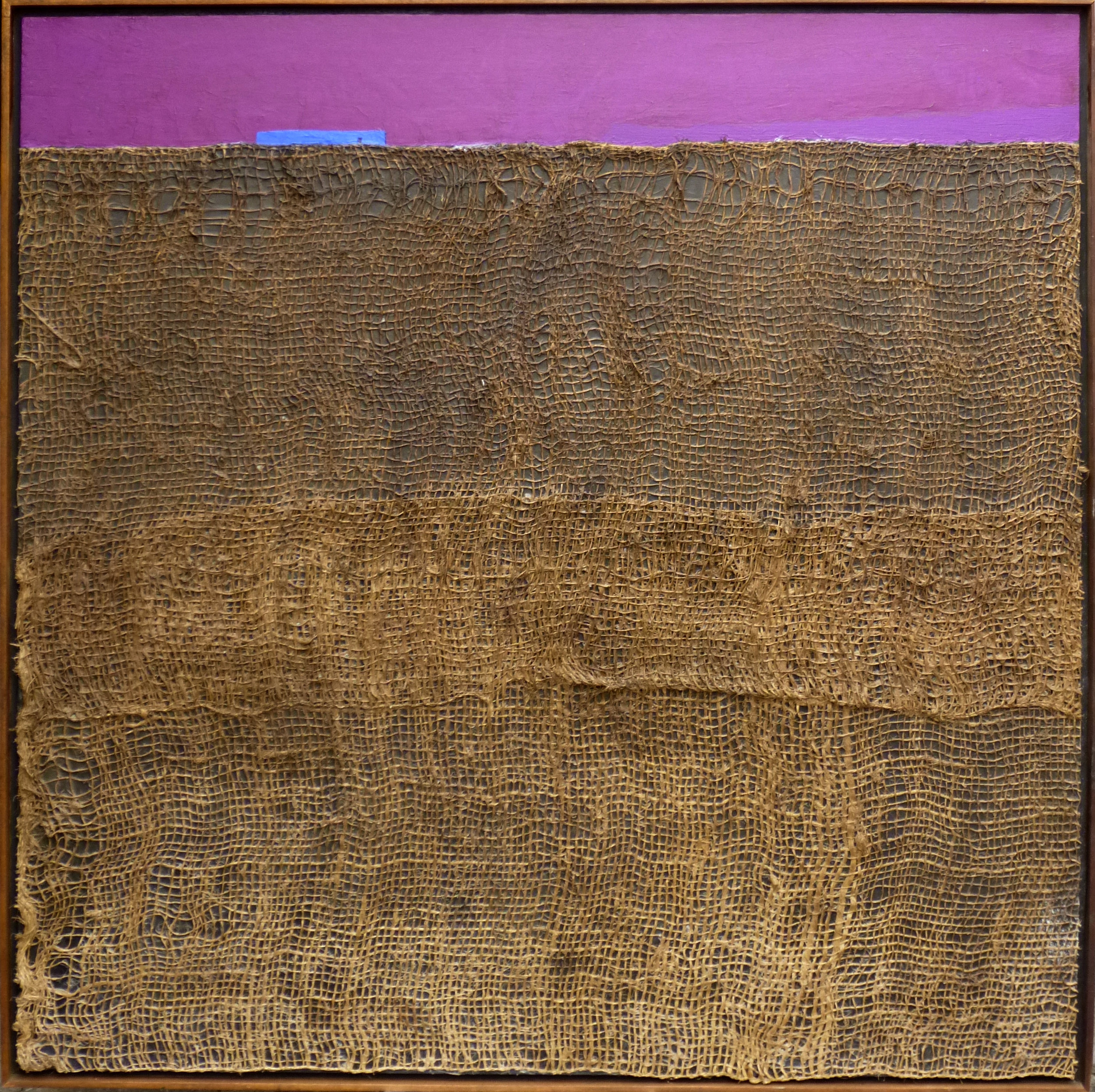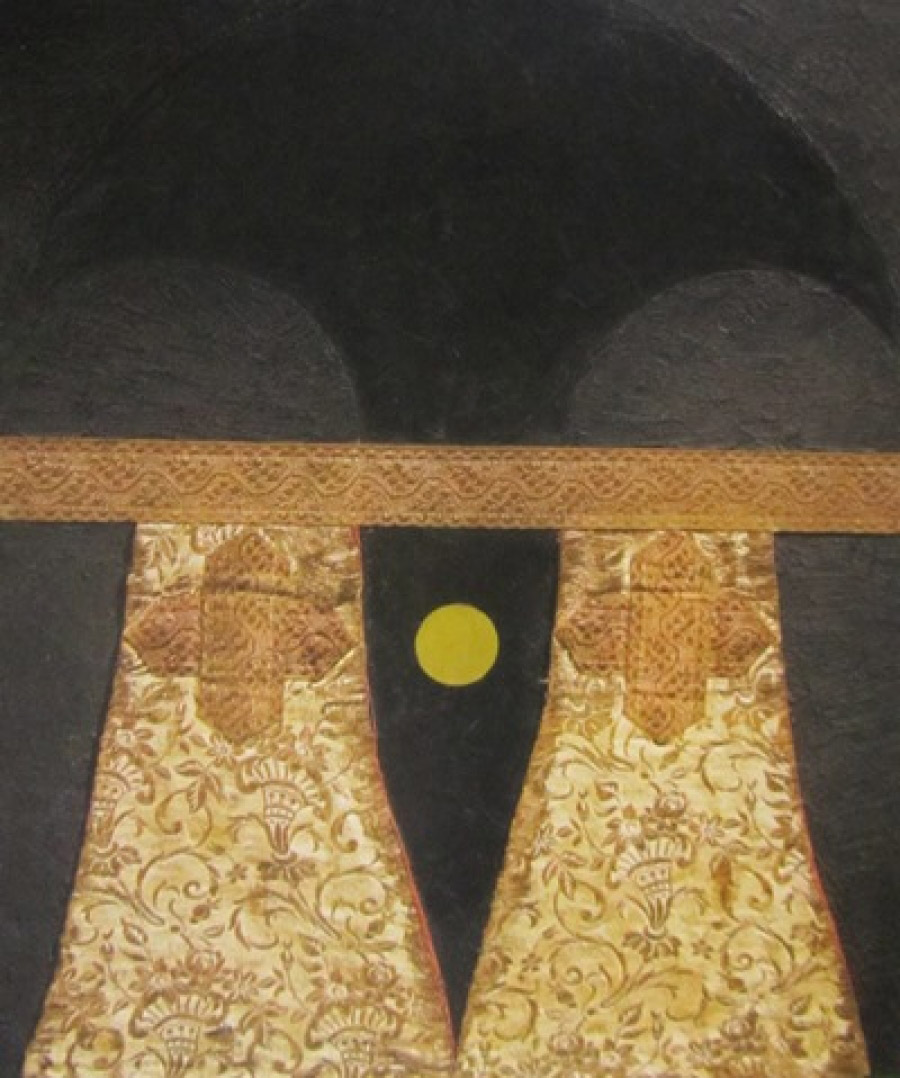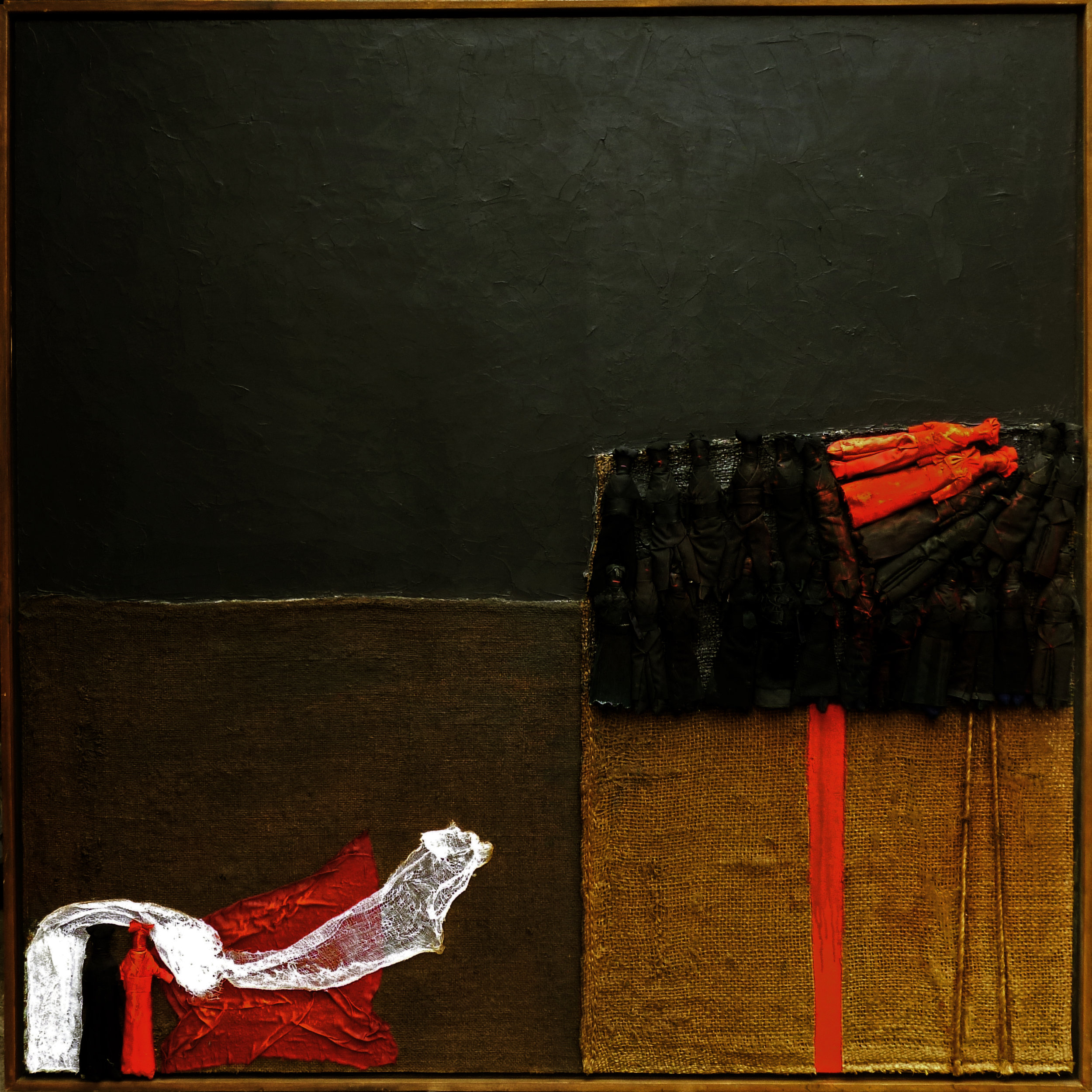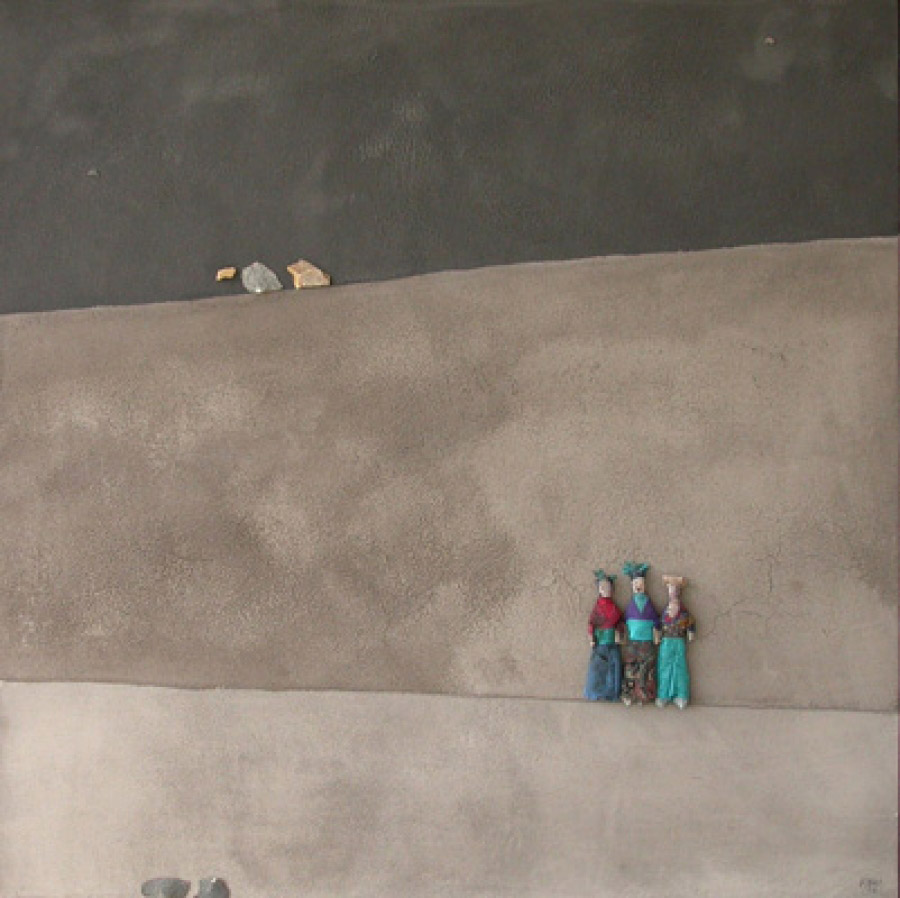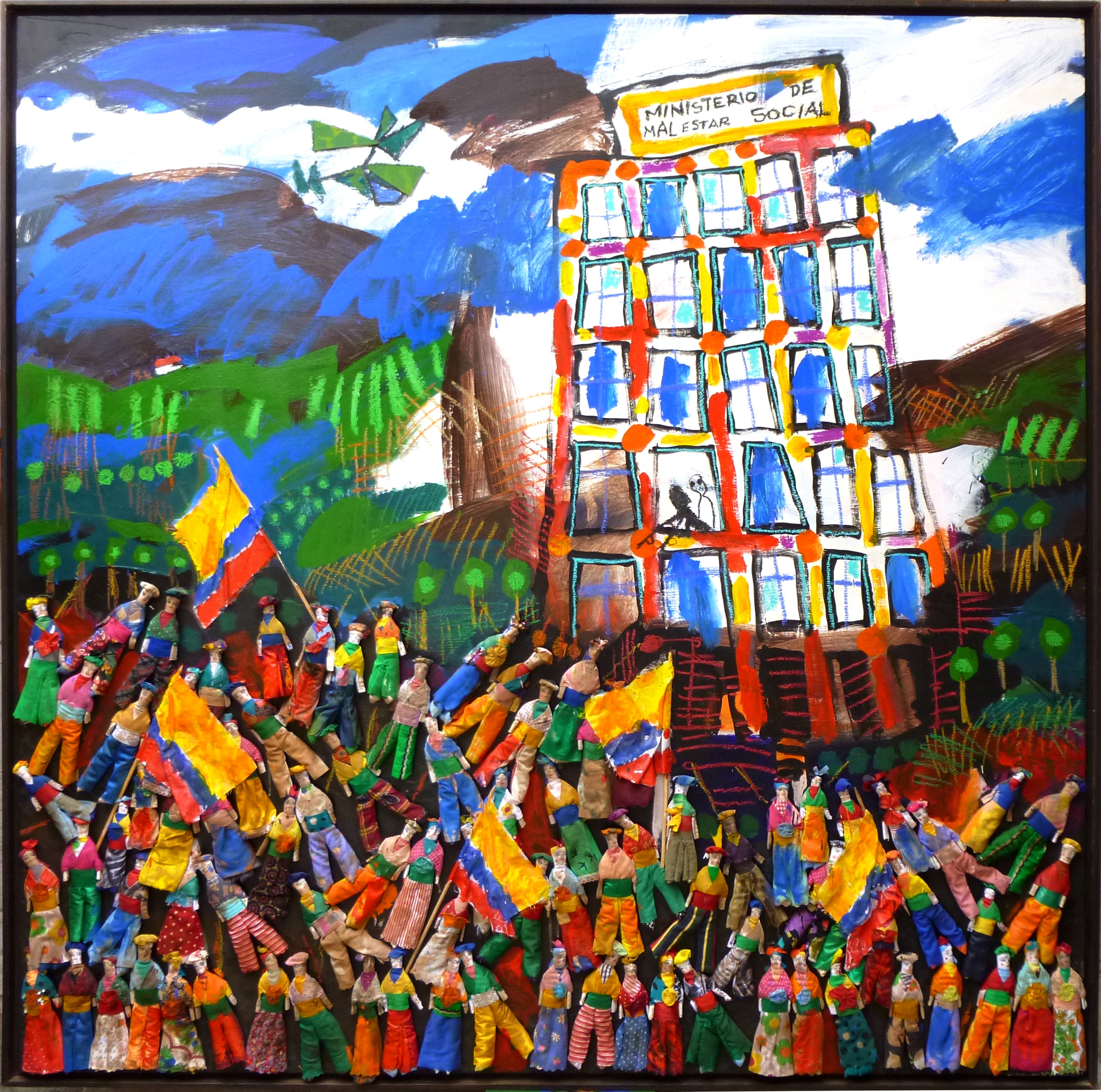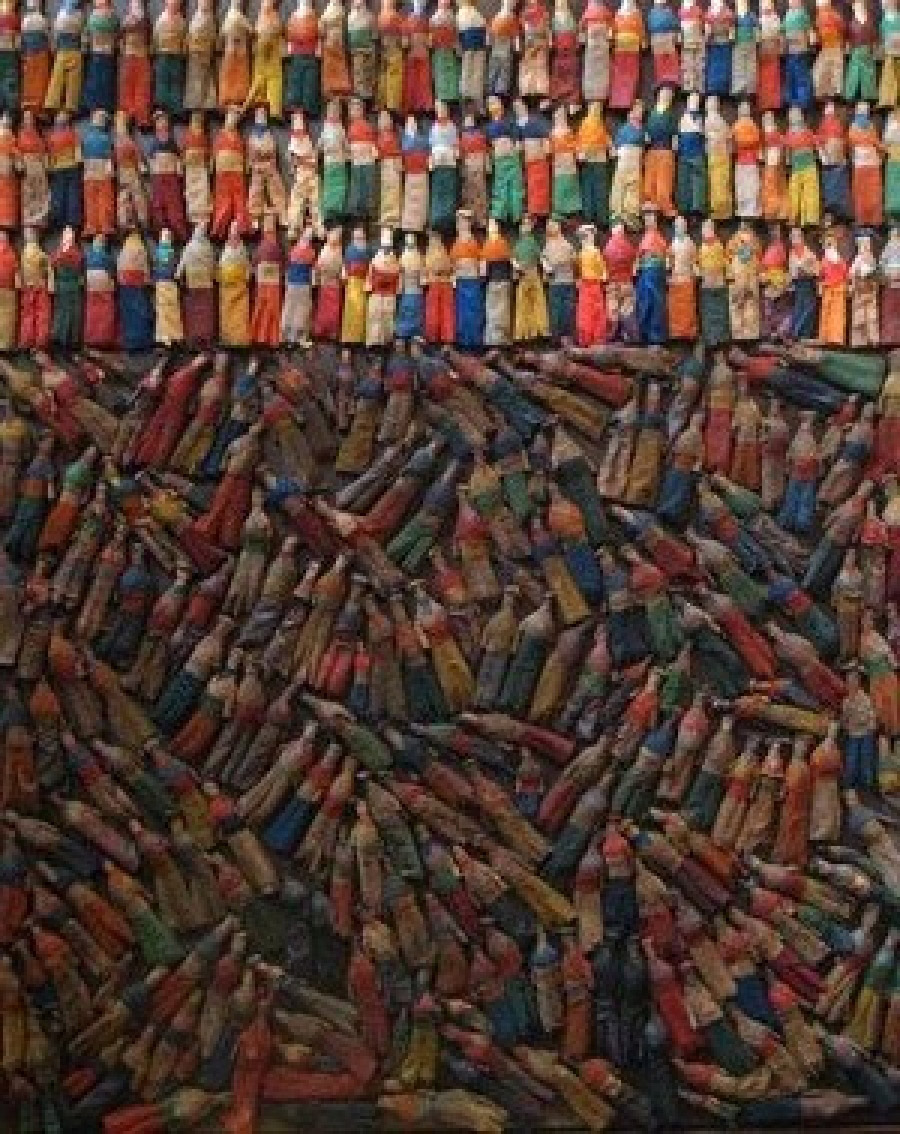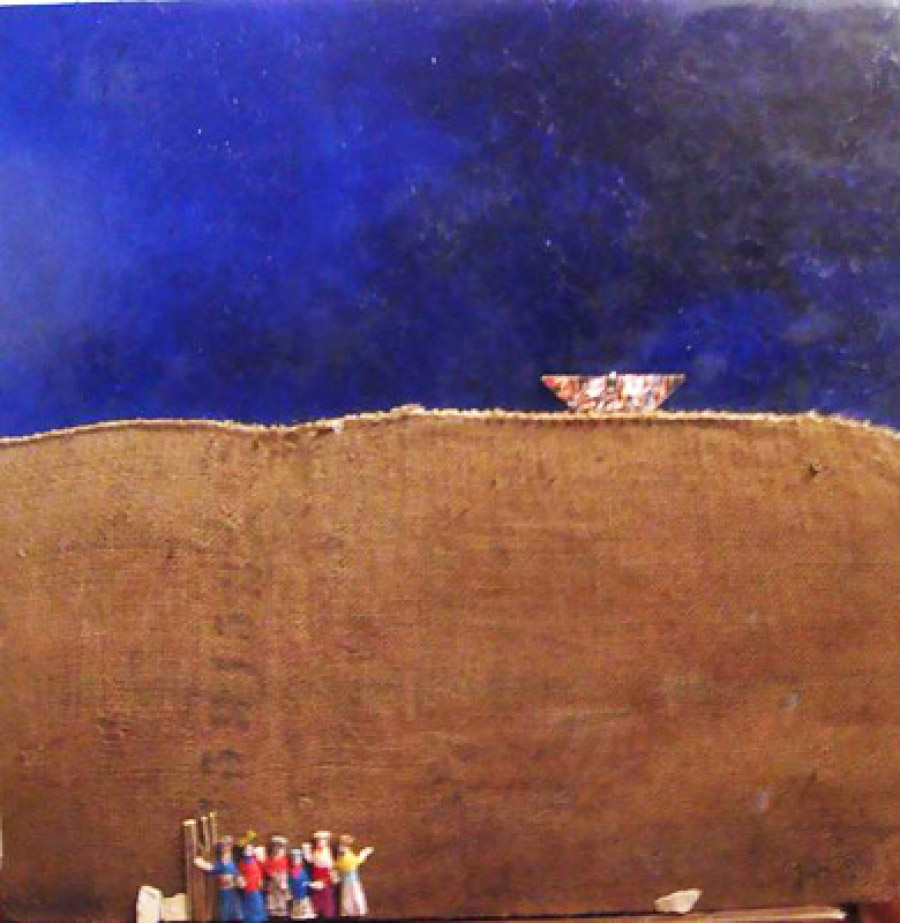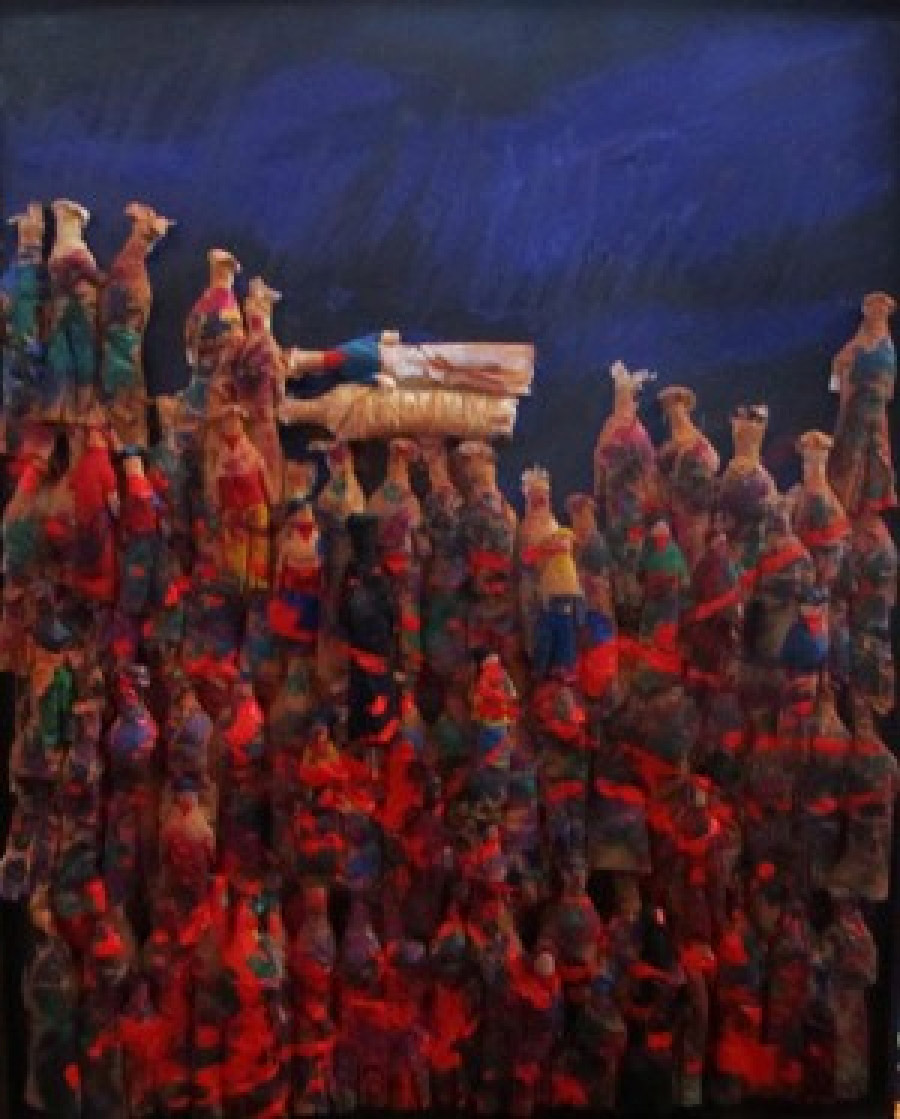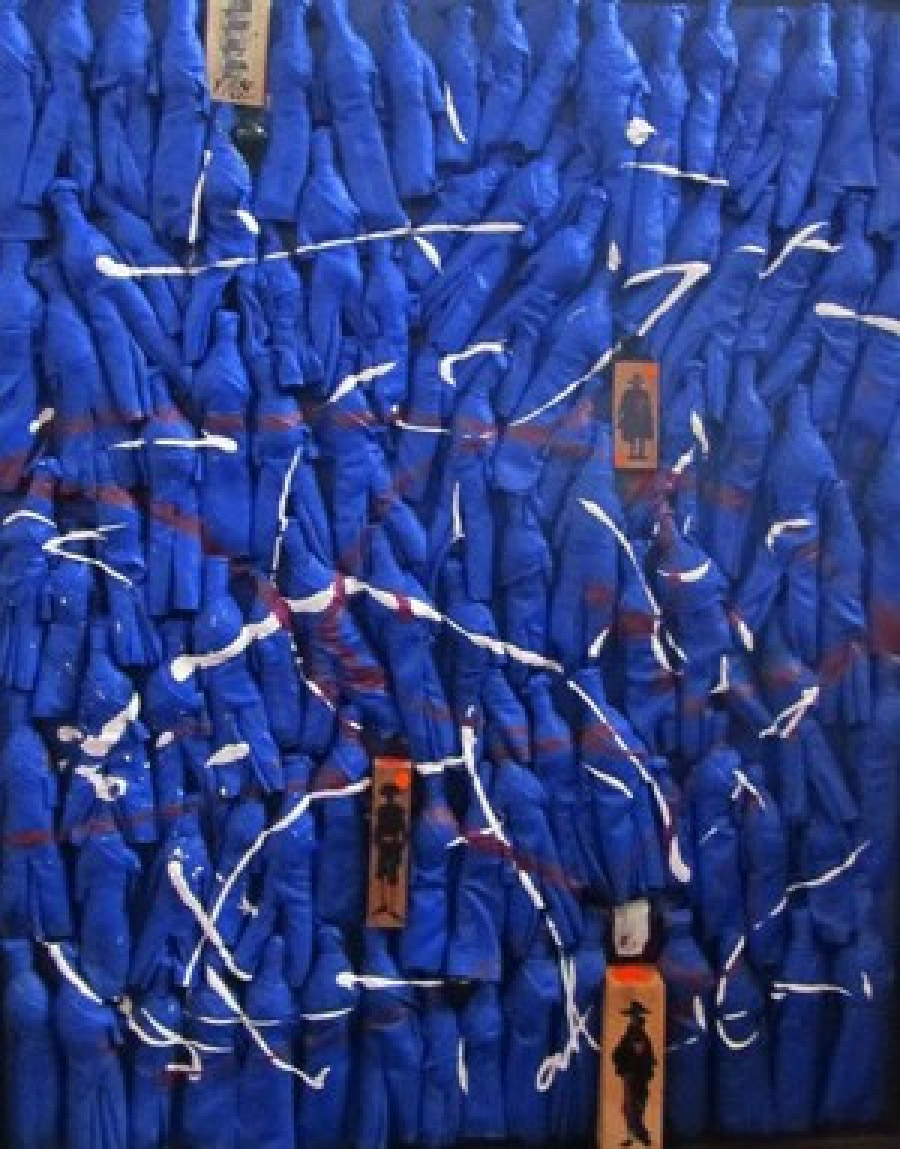
about THE VITERI’s ASSEMBLY
| I do not think I am wrong when I say that the first image that catches us in front of Viteri's assemblages is that of rag dolls, arpilleras and chasubles glued on generally square formats and whose arrangement sometimes in more formal arrangements, more abstract and rigorously geometric trend , and other times more gestural and expressionistic leads us sooner or later on its strange and singular nature.
Viteri, who had previously worked in a so-called "symbolic expressionism" and later in the gestural abstract, towards 1968 leads to a new search, both technical and conceptual, whose result is assembly. The incorporation of objects-icons, objects-symbols-taken from the ancestral and popular culture, especially in the Andean world, and bearers not only of meanings but of times and spaces prior to the work of art-gives rise to a new language , which in itself challenges painting. We could say, then, that the assembly distances itself from it to approach the sculpture, but rather that, through the dialectic between objects, icons, symbols, painting and plastic space, it raises a rich dialogue between myth and memory, past and present, poetry and history.
Conceptually and technically, the assembly moves away from the collage by emphasizing the constructive aspects of the compositional ones, by dimensioning the conceptual aspects of the expressive aspects and by delving precisely into the semiological aspects of meaning, extracting it, in this way, from intuition alone. Thus, almost premeditatedly, plastic elements, fragments and traces of reality dolls, chasubles, pieces of arpilleras, pieces of paint are reconstructed under the light and shadow of the work of art. They return to mean, again and again, without losing, at the same time, their own voice. Irreversible transformation for those, for art, for ourselves.
Anthropological research in the field of folklore during the sixties, prints in the assemblies of Viteri a contextual character that contribute to the major trends with respect to the world centers of culture. Moreover, they reaffirm them within the new proposals, from the peripheries, whose fundamental preoccupation is the vindication of the identity, of the particularity with respect to a unique past and present, but without ceasing to assume, at the same time, the undeniable universality of the language of art. In this sense, the concept of miscegenation singles out his work, miscegenation or fusion that not only considers the ethnic aspects but, above all, the cultural and historical ones over time. In the same way as the peripheral present, the assembly itself is heir to the western and the native, the erudite and the popular; it comes from the sacred and the profane world, it comes from the crowds and from the solitary man, but it merges into a new presence, which has its color, its voice, its own way of being.
The particular as the universal, the permanence and the transience, the simultaneity and the individuality are all part of the contemporary, Latin American reality of the reality of art; and they are nothing more than the continuous evolution of historical, cultural, human processes, before and now, everywhere and right here. They show the paradox of all the worlds, of those that are built on or under the same paradoxes of conquests, of life and art that are irreversible conquests as well.
These assemblages of Viteri, sometimes emaciated in their solitude reminiscent of the Andean moors, sometimes black and sometimes red, sometimes full of colorful crowds where the sky barely appears or where a beam of light illuminates a few, to the center, inside a perfect square or circle ...; these assemblages, other times rigorously geometric, almost pre-Columbian, but paradoxically embroidered with Baroque objects, are the rupture of linear continuity and are the same relativization of the absolute.
Hence his great creative and interpretative force. Only through the footprint of the fragment, of those overlapping, underlying, overlapping reality fragments is the continuity of memory restored and of that syncretic totality that has stripped the absolute of its force.
These would seem to be Viteri's assemblages, they would only seem to be ...
"This is a work that more than raise evidence, raises suggestions. It is a work that aims to stimulate creativity, imagination, the interpretation of the viewer "(O. Viteri, 1996)
Ileana Viteri
Architect Director / Viteri Art Center
En una encrucijada del cielo me espera una casa con luceros, 160 x 160cm, 1978







